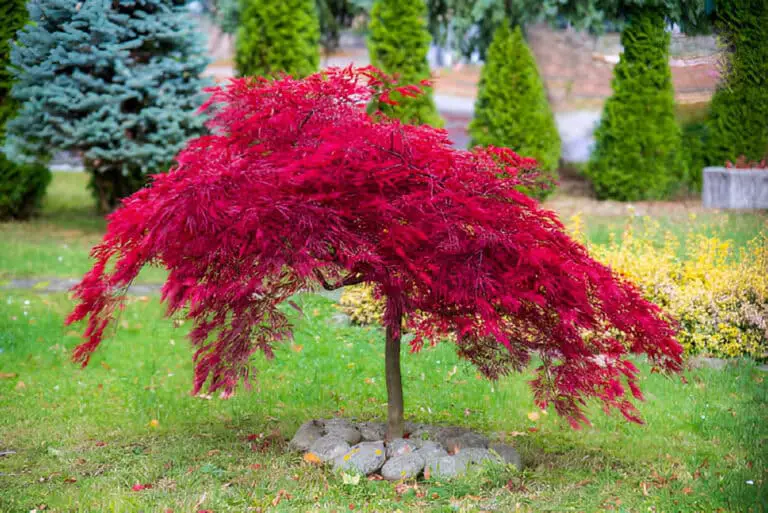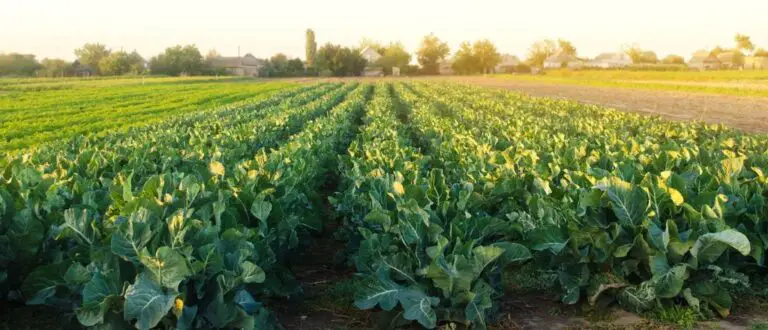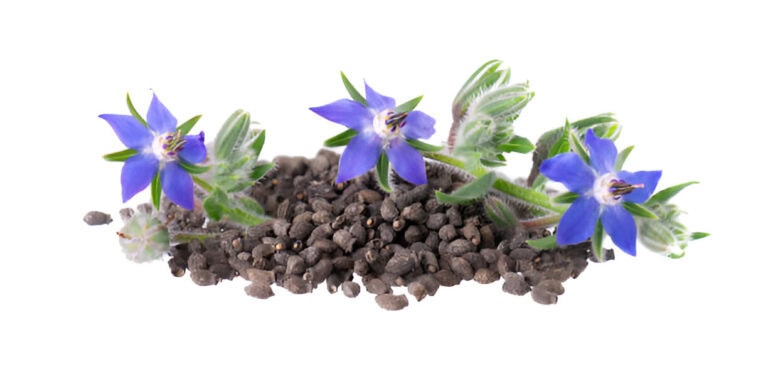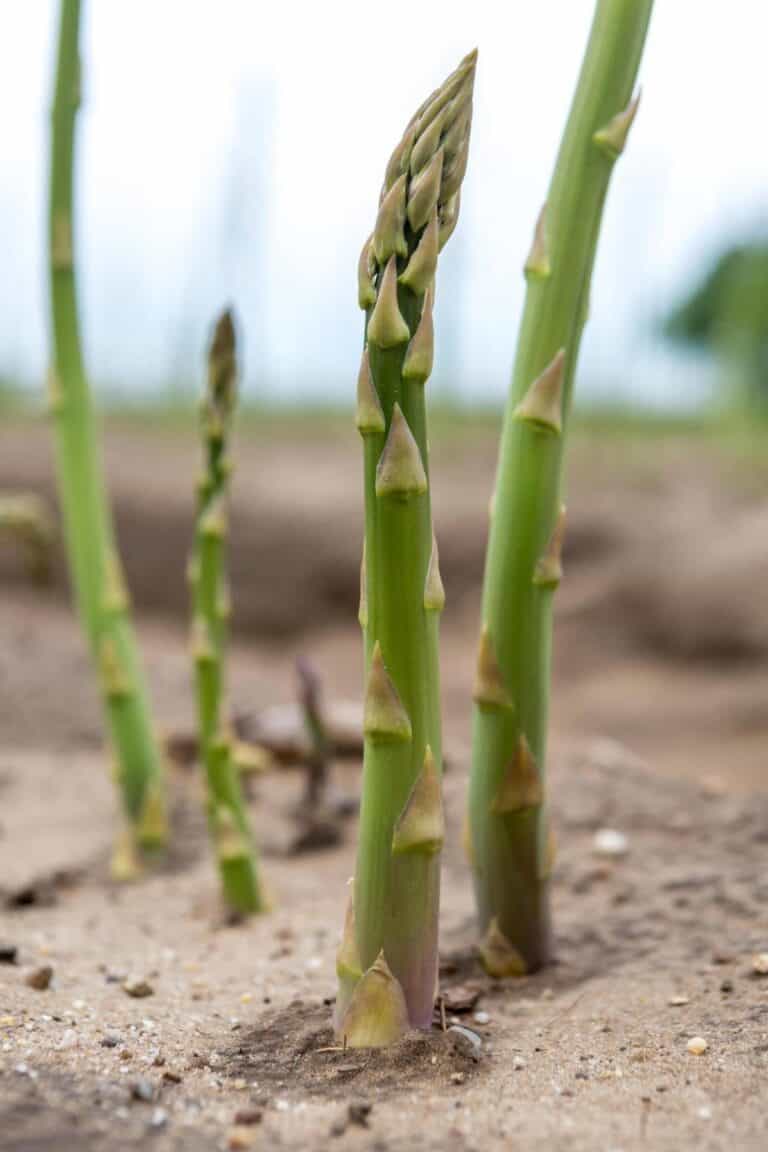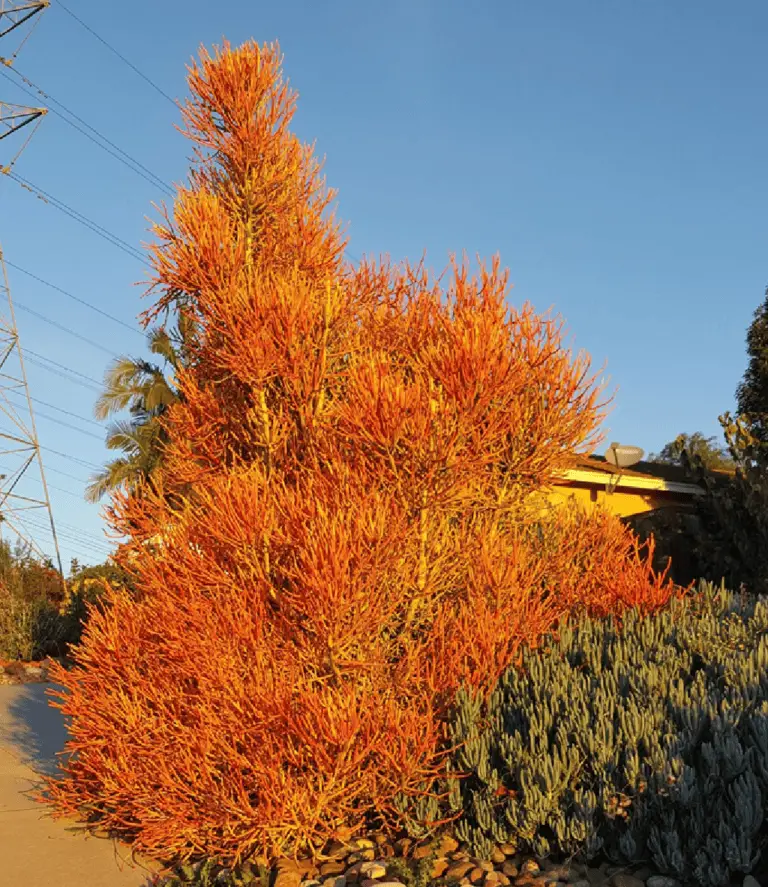Do Potatoes Need Full Sun or Shade Sunlight to Grow? Sun Requirements
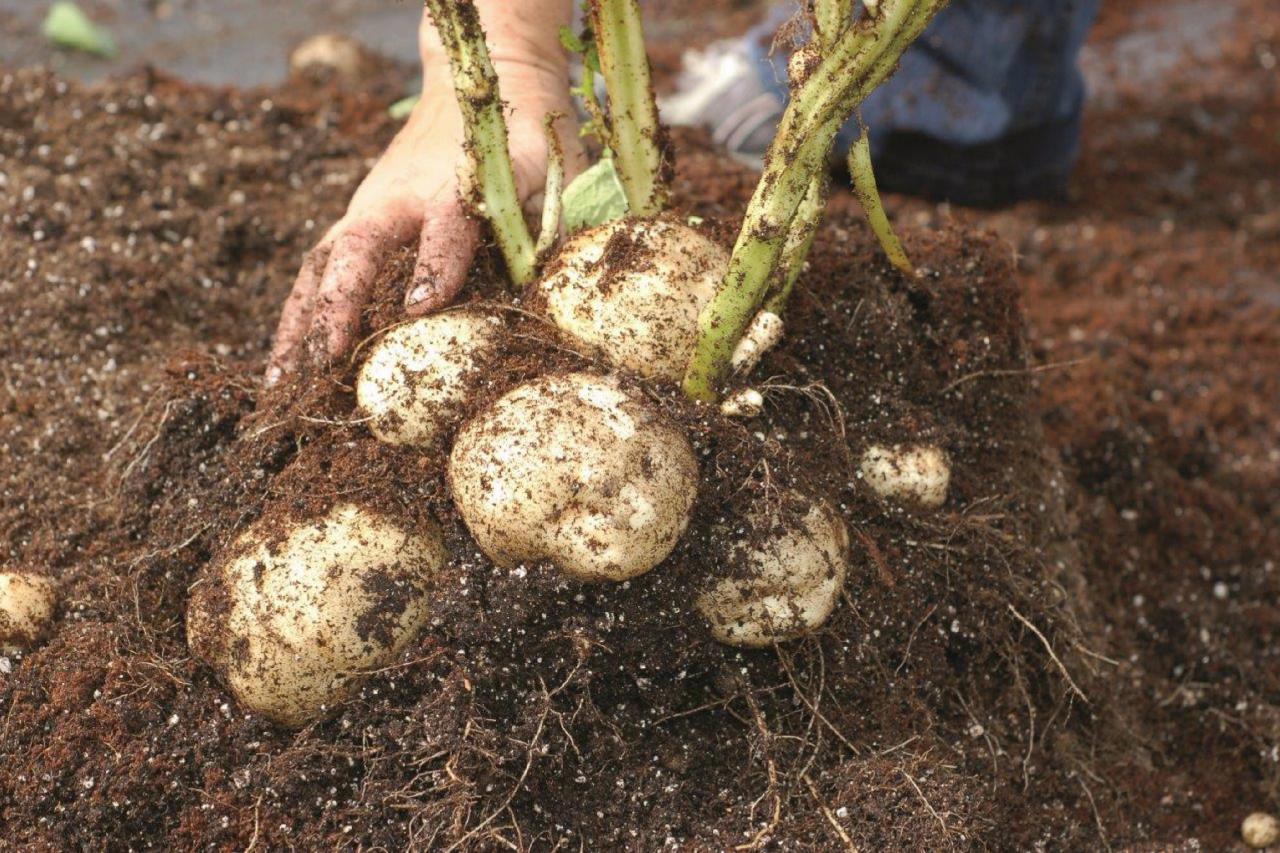
Like many plants, potatoes need sunlight for their growth. Not every farm or yard is blessed with full sunlight all year. It depends on many factors, like zone location, latitude, and surrounding trees.
Do potatoes need full sun or shaded sunlight to grow? What is the ideal condition to grow potatoes: areas that get direct sunlight or perhaps areas that get shaded sunlight?
Potatoes need full sun to grow, but they can also tolerate partial shade. To grow potatoes successfully, you must provide them with the proper soil, water, and balance of sunlight. Too much or insufficient sunlight is not good for potatoes to grow.
So, if you’re dreaming of a backyard potato bonanza, join me as we uncover the secrets of seed success, balancing sunlight and shade for a harvest that’ll make your taste buds dance. Get ready to grow with the flow—potato style!
Types Of Sunlight for Plants Growth
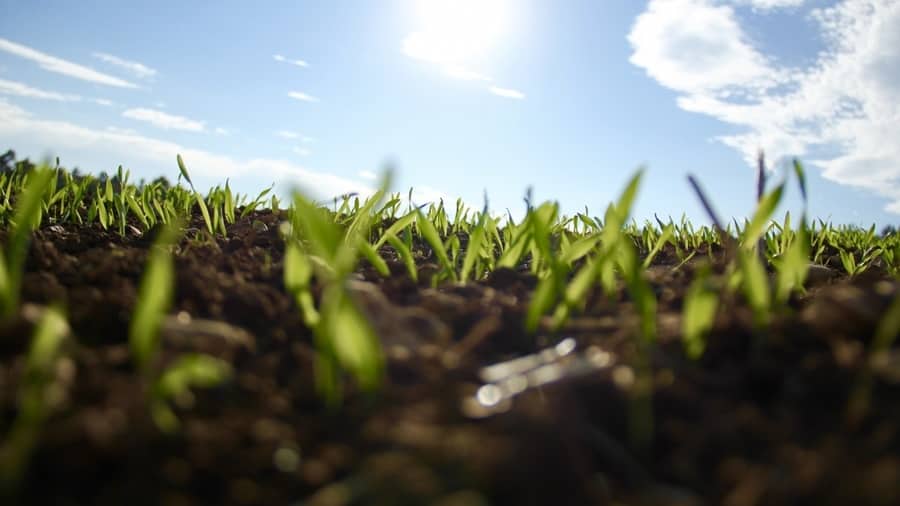
Plants need a certain amount of sunlight to grow, among other things. This is important for them to do photosynthesis. In general, two basic sunlight conditions define the daily amount of sunlight: full sunlight and partially shaded sunlight. This sunlight is important as a source of energy for plants throughout the planting season.
Full Sunlight
There must be at least 6 hours of direct sunlight each day in a full-sun area. This usually happens between the hours of 10 a.m. and 6 p.m. But those six hours are for general areas. Plants that require direct sun should receive at least 8 hours of sunshine every day in northern climes where the sunlight is lower.
Partial Shade Sunlight
Both the terms partial shade and partial sun apply to places that receive between 3-6 hours of direct sunlight per day. Partial sun locations receive direct sunshine (typically near midday) but will be shaded for the remainder of the day.
Partially shaded areas are either substantially shaded for part of the day or get filtered or dappled sunlight throughout the day. There are some areas where sunlight is filtered by the leaves of trees prior to actually reaching the plant; this is called refraction.
Do Potatoes Need Full Sun or Shade Sunlight to Grow?
Most potato plants want at least 6 to 8 hours of direct sunshine a day. Photosynthesis is required for the potato leaves to supply nutrients to the root and produce the tubers.
Potatoes mature over several months. You may not get constant sunlight, during which time the direction and intensity of the sun fluctuate.
Because the quantity of sun your plants get varies throughout the growing season, find the best position in your garden that provides for continuous sunlight exposure during this period.
Do Potatoes Grow Better In Direct Sunlight Or Shade?
The upper leaves of potatoes grow best in direct sunlight, as they need sunlight for photosynthesis. On the other hand, the roots and tubers grow best in the shadow or shade of sunlight.
When the plants grow in full sun, the tubers are larger and more plentiful. Still, you can grow in the shade if potato quantity isn’t a concern. In this case, go ahead and use a shadier garden area if you won’t be utilizing it for anything else.
There are a few keys to ensuring that the top leaves of potato plants get enough light:
- Before planting potatoes, find a sunny area in your garden or farm. It should receive at least six hours of direct sunlight each day. Pay attention to trees; a site that appears to be good in the winter or spring may be completely shaded once deciduous trees’ leaves appear. If you have already planted potatoes but they are still small, you may be able to transfer them.
- You should pay attention to the crops next to you. Make sure you don’t plant potatoes too close to tall crops. These are potential crops that can grow higher than potatoes: tomatoes, corn, or bush beans or pole beans). These neighbouring plants will restrict sunlight from reaching potato plants, particularly if they grow between the potatoes and the sun.
- Leave the tops of the potatoes alone when you are hilling them. This way, the top potato leaves receive sufficient sunlight. Allow the plant’s top to remain uncovered so that the leaves can receive sunlight.
If you do it wrong, hilling will stop potato plants from growing because it will block them from getting sunlight. In order to keep the roots and tubers of potatoes cool, you need to make hills in your garden or farm.
During the growth season, continue to pile soil around the base of potato plants as they grow taller. You may need to repeat this process several times, and the slope may reach 8 inches or higher.
How Much Sunlight Potatoes Need?
In normal conditions, potatoes need a minimum of six hours of direct sunlight every day. As they’re a cool-season crop, they should be planted in the garden when the soil temperature reaches 40 degrees Fahrenheit. Potatoes grow best in locations with summer temperatures between 65 and 70 degrees Fahrenheit, although they can also grow in hotter climates. That is the ideal condition for how much sunlight potatoes need.
Potatoes also need soil that retains their dampness. Mulching helps the soil retain moisture while also protecting the potatoes from the sun. Mulching with topsoil will prevent potatoes from turning greenish, which is known as solanine.
There are obvious benefits to cultivating potatoes in full sunlight. Full sunlight helps to stimulate optimum growth, which will in turn help to promote the growth of the roots.
Potatoes can grow in partial shade, but the abundant top foliage is what nourishes the tubers underground. The more sunlight there is, the better for them to grow. If the tubers grow towards the surface, they must be shaded from the sun, or else they will turn green.
How To Tell If Potatoes Are Getting Too Much Sunlight

It’s crucial for you, as a gardener, to notice problems before they harm your crop. Too much sunshine for your potatoes is not necessarily a good thing, especially when they reach a certain age.
Following are some of the most typical symptoms that your potatoes are beginning to experience the adverse effects of too much sunlight:
- Leaves that turn a pale green color
- Leaves that wilt and eventually dry
- Tubers turn slimy and brown.
- Tuber formation and development are limited.
- Tubers color turn greenish.
Potato plant leaves that darken, wilt, or dry up indicate that they have been exposed to too much harsh sunlight. Damage to the leaves inhibits the plant’s ability to transmit nutrients, allowing tubers to grow. Tubers that do form may be mushy or wet to the touch and brownish in color.
When you notice these indicators, you should take some immediate action to save your crops. Protect your plants from the hottest noon sun by spreading a shade cloth over corpses until the intense sunshine passes. You should make sure to keep the soil moist to avoid high soil temperatures.
Green tubers are sure evidence of solar damage. Any light (including artificial grocery store or house lights) on a tuber can release solanine, a toxin that causes the potato to taste bitter and can make you sick. If ingested in large enough quantities, solanine can be lethal.
The simplest approach to preventing green potatoes is to “hilling” them, or mound soil over and around any spot where tubers could grow.
After planting, build up a hill around the base, adding more as the plants begin to flower. While the tubers are mature, hill them again to provide a safe barrier between both the sun and the root, preventing green spots from forming.
Can Potatoes Grow In Shade or Without Sunlight?
Most potatoes can grow without a full eight hours of daily sun, but the absolute minimum amount of daylight for potatoes is six hours per day.
So while potatoes do, in ideal conditions, need full sunlight to grow properly, potatoes can still grow in partial shade sunlight area. That’s an area that is shady but still bright – it could be shaded for part of the day and sunny for the rest, or receive filtered sunlight.
Potatoes Planting Requirements: Spacing and Depth
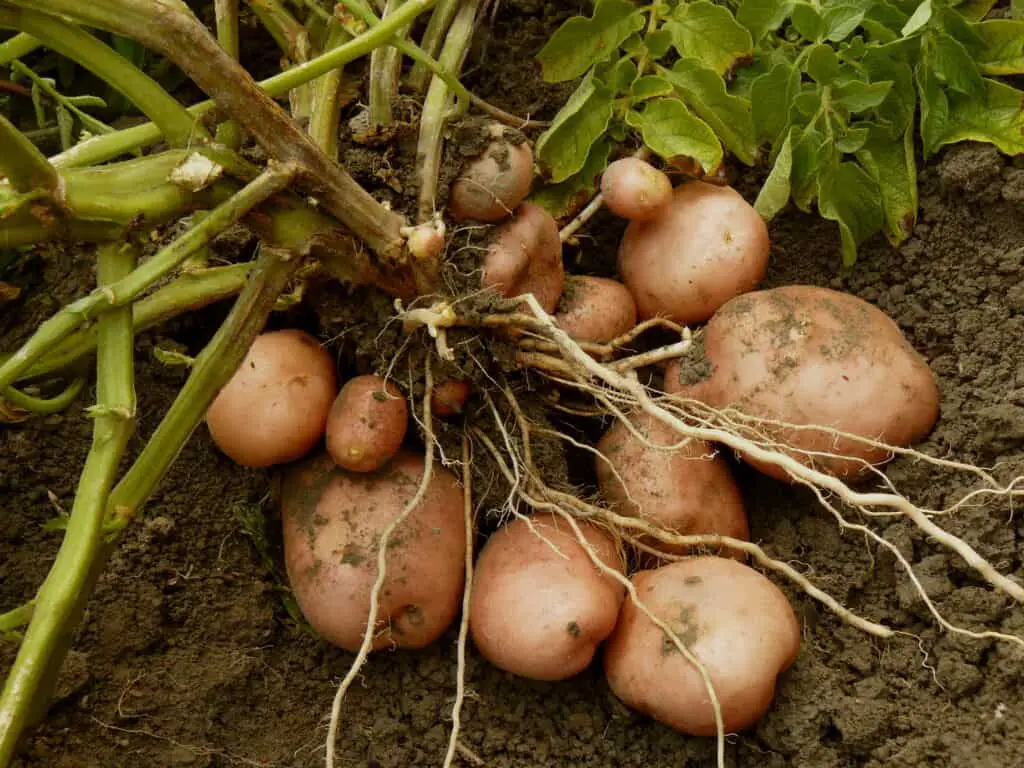
Spacing is crucial when planting potatoes because they are big feeders. They should not be competing for water and nutrients with other plants. You should plant potatoes as close as 12 inches apart in highly rich soil. If your topsoil is less fertile, you should plan to give them space from 14 to 18 inches apart.
Because they will need to be hilled at least twice, it makes sense to plant them about 12 inches beneath ground level and cover them with four inches of soil.
Read: Best Soil Conditions and pH Level for Planting Potatoes
Potatoes Planting Requirements: Temperature
Temperatures have an impact on the entire potato growing process. As an example:
- Potatoes will not start growing until the soil temperature exceeds 45°F (7°C).
- Before planting, potatoes are frequently sprouted (chitted); temperatures ranging from 60 to 70°F (21 to 16°C) are ideal.
- Temperatures between 45 and 80°F (7 and 27°C) are ideal for potato growth and flowering.
Potatoes Planting Requirements: Sprouting
Potatoes can grow naturally without sprouting. However, there are certain benefits to sprouting potatoes rather than growing them without them. To begin with, you may rest assured that each and every potato you plant has proven its ability to grow.
This is especially crucial if you have limited space and are experimenting with an expensive new kind. Second, in cold climates, sprouting can give you a head start on the season. You better start your sprouts in a warm place a few weeks ahead of planting time.
Potatoes Planting Requirements: Size and Eyes
You can either plant entire little potatoes or cut up larger potatoes into a few pieces. The chunks should be around 2 or 3 inches in size when sliced up. Potatoes that have been cut should be dried in a warm place for a few days before they are put in the ground.
To ensure a successful harvest, check that each potato or piece has at least two healthy eyes with healthy shoots. You should aim for a minimum of two eyes, as not all eyes will produce sprouts.
FAQs on Potato Cultivation Sunlight Requirements
What happens if potatoes don’t get enough sunlight?
Insufficient sunlight can hinder potato growth and result in smaller yields. Adequate sunlight is crucial for the development of healthy potato plants.
Are there potato varieties that need less sunlight?
Yes, some potato varieties are more shade-tolerant than others. If you have a partially shaded garden, choose varieties known for their adaptability to varying light conditions.
What are the ideal light conditions for potato plants?
Potato plants thrive in well-lit environments, requiring at least 6-8 hours of direct sunlight daily. Adequate sunlight is crucial for their photosynthesis process and overall growth.
How does sun exposure affect potato crops?
Sun exposure directly impacts potato yields. Ample sunlight supports robust growth, while insufficient exposure can lead to smaller yields and less productive potato plants.
Are there specific sunlight needs for different stages of potato cultivation?
Yes, during early growth, potatoes benefit from full sun. As they develop tubers, maintaining consistent sunlight is crucial for a successful harvest.
What can I do if my garden doesn’t receive enough sunlight for potatoes?
If your garden has limited sunlight, consider planting potatoes in containers that can be moved to sunnier spots. Additionally, choose potato varieties known for adaptability to varying light conditions in your region.


